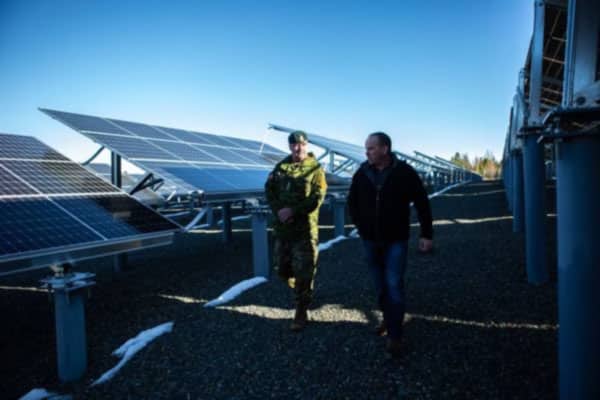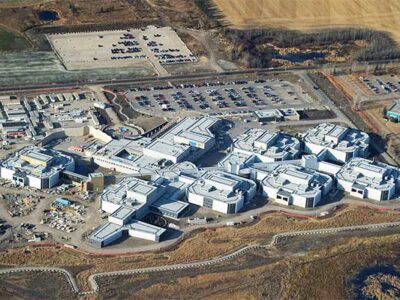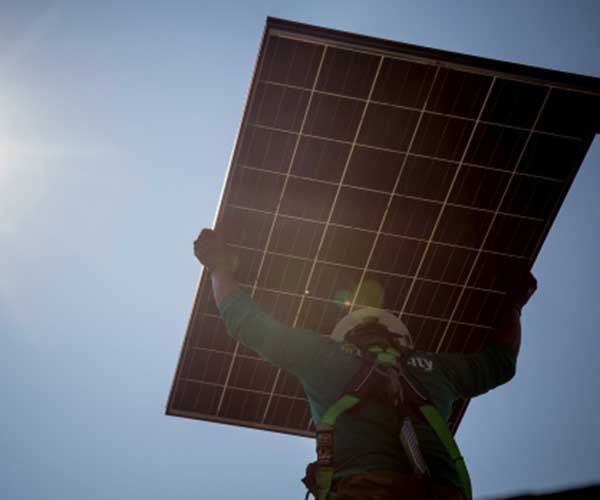- Canada's military is one of the first to commit to hitting net-zero greenhouse gas emissions by 2050.
- The Department of National Defence (DND) and Canadian Armed Forces (CAF) have reduced emissions by 35.9% since 2005.
- Speaking with pvbuzz, the military discussed future solar developments that'll supply electricity requirements to its massive base.
Canada’s military is one of the first to commit to hitting net-zero greenhouse gas emissions by 2050, meaning this is just the start for military-purposed solar microgrids.
COVID-19 exposed weaknesses in Canada’s supply chains and emergency contingency plans as it did with other nations. Additionally, the war in Ukraine has highlighted how fossil-fuel-based energy dependence can lead to devastating effects, with skyrocketing gas and electricity prices causing widespread economic disruption throughout Europe.
Moving forward, the Canadian Armed Forces must develop and adhere to an energy strategy that puts self-sufficiency, reliability, and sustainability at its core. Doing so will ensure the CAF’s goal of net-zero emissions by 2050 is successful, boosting Canada’s solar industry through deploying additional microgrids.
The Department of National Defence’s (DND) first net-zero building is the 5th Canadian Division Support Base in Gagetown, New Brunswick. It is a training facility for combat engineers and an explosives and ordnance disposal site. Powered by roughly 1000 solar panels, the building produces 375 kilowatts of clean, renewable energy.
The facility isn’t connected to any utilities, instead sourcing its heat from geothermal energy. Additionally, water is collected from an underground well and cisterns on the roof, with wastewater being treated and purified on-site.
The building’s impressive solar farm produces more than enough energy to supply the building, so excess capacity is directed into on-site battery storage systems. Capable of hedging against the risk of overnight outages, this is just one of many safety features that solar microgrids can be equipped with.
Jon Parker, the electrical team lead in Gagetown, told the Globe and Mail that the farm’s set-up is unique in that it can completely disconnect from the grid. The installation sends excess power into the Gagetown garrison and was designed to accommodate future renewable energy projects. According to Parker, there’s a “good chance” an expansion is in store for the town, where officials are weighing competing contract tenders to build a new 5-megawatt solar farm.
“Gagetown achieved net-zero annual energy consumption by integrating renewable energy, energy storage, and advanced technologies that ensure the optimal operation of the heating, ventilation, air conditioning and lighting systems. The new and upgraded facilities support high-quality training on explosive ordnance and improvised explosive device disposal,” said
Andrée-Anne Poulin, Communications Officer at the Department of National Defence, in a quote to pvbuzz.
Regarding future solar developments, Poulin was quite bullish in his remarks.
“As part of [Gagetowns renewable energy plans], we are currently exploring a larger solar farm project to partially supply the electricity requirements of the [total] military base, which has a peak demand of approximately 7.5 MW. We continue to look at solar and other forms of renewable electricity generation to help meet our target to consume 100% clean electricity [in] our facilities by 2025.”
Canada’s military is one of the first to commit to hitting net-zero greenhouse gas emissions by 2050, meaning this is just the start for military-purposed solar microgrids. CAF’s new efforts in reducing emissions will go a long way toward Canada’s overall climate targets, especially as it’s one of Canada’s largest employers and has a footprint across 2.1 million acres of land — including 20,000 buildings.
The Federal Defence Energy and Environmental Strategy (DEES) also highlights the need for the DND and CAF to improve energy efficiency measures in addition to switching to distributed energy resources. This year’s DEES progress report shows that the DND and CAF have reduced emissions by 35.9% since 2005.
The growing push for reliability and sustainability in the DND and CAF is good news for the Canadian solar industry — and climate — with multiple new projects spanning a range of facilities set to take off in the next few years.















Comments